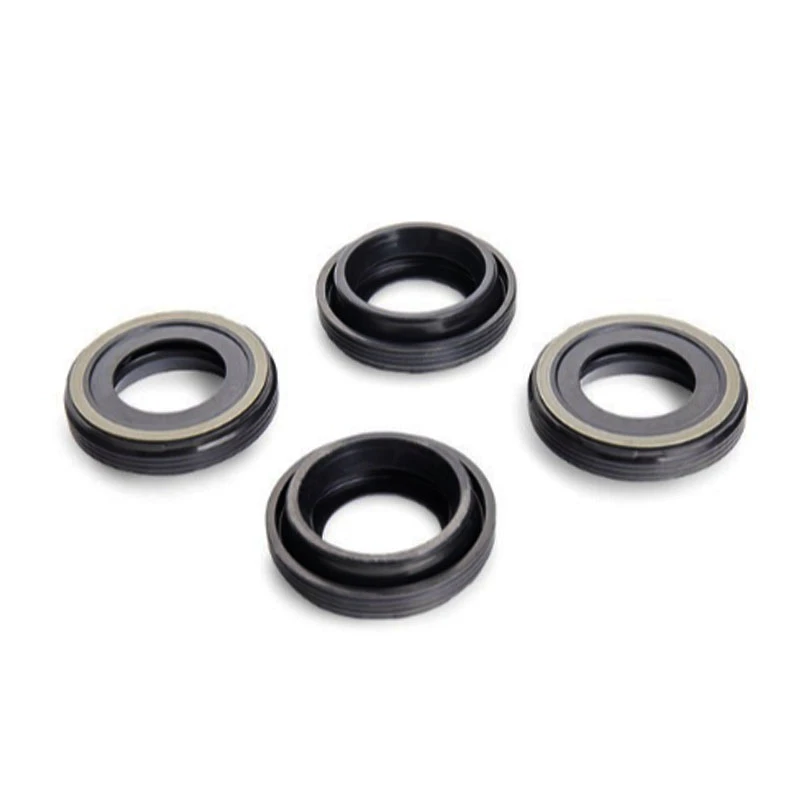Oil Seal Production Process and Key Manufacturing Techniques Explained
The Process of Oil Seal Manufacturing
Oil seals, also known as grease seals or rotary seals, play a critical role in various mechanical systems by preventing the leakage of lubricants while keeping out dust, dirt, and other contaminants. Their applications span a wide range of industries, including automotive, aerospace, agriculture, and machinery. Understanding the manufacturing process of oil seals is essential to appreciate their importance in ensuring the efficiency and longevity of mechanical systems.
1. Raw Materials
The manufacturing of oil seals begins with the selection of appropriate raw materials. Oil seals are primarily made from elastomers, which are flexible and durable polymers. Common materials include nitrile rubber (NBR), fluorocarbon rubber (FKM), silicone (VMQ), and polyurethane (PU). Each material is chosen based on specific requirements such as temperature resistance, chemical compatibility, and mechanical performance.
2. Design and Engineering
The design phase is crucial for the functionality of oil seals. Engineers use computer-aided design (CAD) software to create precise specifications that include dimensions, cross-sectional shapes, and sealing lip profiles. Different applications may require varying designs; for instance, a seal used in a high-speed rotating shaft will have different engineering requirements than one used in a stationary application. Simulation tools can predict the behavior of the seal under various conditions, ensuring optimal performance before physical prototyping.
3. Mold Creation
After finalizing the design, manufacturers create molds used for shaping the oil seals. These molds are typically made from steel or aluminum and are machined to high tolerances to ensure accurate reproduction of the seal shape. The complexity of the mold can vary depending on the design of the seal, and creating these molds often involves intricate processes that require both expertise and precision.
4. Mixing and Compounding
oil seal manufacturing

Once the molds are ready, the next step involves preparing the rubber compound. The raw elastomer material is mixed with various additives, including accelerators, stabilizers, and fillers, to enhance its properties. The mixing process is critical as it ensures that the chemicals are evenly distributed throughout the rubber. This process usually takes place in large mixers, where the components are blended at controlled temperatures to achieve the desired consistency.
With the rubber compound ready, manufacturers proceed to the compression molding process. In this method, the rubber is placed into the mold, and heat and pressure are applied to cure the material. Curing is a chemical reaction that transforms the rubber into its final, durable form. The time and temperature during curing are crucial as they determine the final properties of the oil seal, including elasticity and hardness.
6. Quality Control
Quality control is a vital component of the oil seal manufacturing process. Each batch of seals undergoes rigorous testing to ensure they meet industry standards and specific customer requirements. Tests may involve measuring dimensions, assessing hardness, conducting leak tests, and evaluating performance under extreme conditions. Any non-conforming products are rejected or reworked, ensuring that only high-quality seals reach the market.
7. Finishing and Packaging
Once the seals pass quality control, they go through a finishing process that may include trimming excess rubber, surface polishing, and applying protective coatings. After finishing, the seals are carefully packaged to prevent damage during transportation. Proper packaging is essential to maintain the integrity of the seals and ensure they arrive at their destination in perfect condition.
Conclusion
The manufacturing of oil seals is a detailed process that combines art and science. From selecting raw materials to final testing and packaging, each step is crucial to producing a reliable product that meets the demands of modern machinery. As industries continue to evolve, the importance of high-quality oil seals in enhancing mechanical efficiency and durability remains undeniable, making their manufacturing an integral part of various engineering applications.
-
Understanding the Front Main Engine Seal: Purpose, Maintenance, and Installation
News Jul.29,2025
-
Understanding O-Rings and Seal Rings: Types, Applications, and Custom Solutions
News Jul.29,2025
-
Understanding Crankshaft Oil Seals: Rear Seals, Pulley Seals, and Their Role in Engine Integrity
News Jul.29,2025
-
The Importance of Front and Rear Crankshaft Seals in Engine Performance and Oil Management
News Jul.29,2025
-
Crank Oil Seals: Functions, Types, and Cost Considerations in Engine Maintenance
News Jul.29,2025
-
A Comprehensive Guide to O-Rings and Seals: Types, Materials, and Global Applications
News Jul.29,2025
-
Mastering Diesel and Performance Engine Maintenance: A Guide to Critical Oil Gaskets
News Jul.28,2025
Products categories















